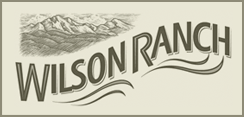Wilson Ranch values and highly encourages the planting and maintaining of native plant species in the community. Noxious weeds spread aggressively and thus crowd out native vegetation. Some of these weeds are quite attractive, e.g., Dalmation toadflax and Oxeye daisy, but all these species are aggressive and should be pulled or sprayed before they spread. Since weeds can spread quickly if left unchecked in common areas or near residences, this can then affect neighboring homes. Sweetgrass Restoration is partnering with Wilson Ranch to keep our beautiful landscape weed-free, but keeping weeds under control is a group effort, and requires residents to participate as much as possible.
On this page you will find helpful documents to help you identify and remove noxious and invasive weeds from our community. Included are images of the prevalent weeds in the area and how to get rid of them safely. The Weed of the Month documents feature a specific weed, where you can find them, and how to remove them.
Please contact management if you have any weed or landscaping questions. Approval is required from the DRC, management, or respective Committee(s) before any project or work can begin. If approved landscaping activities will be occurring near your home (tree removal, new plantings, weeding, or other landscaping projects), management will provide 48-hours notice to homeowners whenever possible. Last minute issues that may shorten or prevent this notice may be: weather changes, illness, or unexpected equipment failure.
Here are some helpful links to help you begin your weed education journey:
The Methow Conservancy weed guide:
https://methowconservancy.org/weed-guide
The Methow Conservancy Weed Control Tool Box:
https://methowconservancy.org/weed-guide/the-weed-control-toolbox
The Good Neighbor Handbook:
https://methowconservancy.org/goodneighbor
Please read these tips from the Methow Conservancy to help prevent the spread of weeds:
It may seem like it’s impossible to prevent the spread of weeds – like they have their own magical powers that we can’t suppress – but the easiest weed to manage/control is one that is not yet on your land. Some weeds even invade undisturbed land so even if your land is pristine you should take good precautionary measures to keep weeds from getting established.
Some of our worst weedy offenders spread via their roots, but all weeds can spread by seed — in our socks and shoes, on our dogs or farm animals, hitching a ride on our cars and bikes, etc. Who has never pulled a cheatgrass seed head out of their sock? Heeding these tips as much as you are able will go a long way to preventing the spread of weeds:
- First of all, if you are disturbing any dirt on your property (septic, driveway, utility, excavation work…), *please* read our Good Neighbor Handbook in our Resources Section for tips on keeping the disturbance small, protecting your topsoil and more). We are happy to mail you a handbook if you want a hard copy and can’t come to our office.
- Take a look at your pants, shoes and socks after you’ve been walking in a weedy area, than take a moment to get all those little weed seeds out of your shoes, socks and clothes and leave them behind before you walk or drive away.
- Staying on established trails when you are walking and biking can help make the above bullet easier.
- Don’t drive or park on top of weeds if you can help it.
- Same goes for mountain biking – seeds love to attach themselves to tires and chain rings, so either stay out of the weeds or clean your bike after each ride.
- It’s hard to keep your dogs out of weed patches, but it’s worth the effort if you can. Otherwise, collect, cut or brush weeds out of their coats when they get covered in weeds and leave the seeds where they came from or throw them in the trash.
- Screen irrigation water before it enters your field or your irrigation pipes.
- Don’t cut or pick pretty noxious weeds and take them home unless you can be sure they won’t be dropping seeds outside.
- If you have cows, horses, goats, sheep or other ranging farm animals, and you know you have weed patches that they get into, such as burdock or Canada thistle, do your best to remove those weeds so that the animals don’t spread the weeds even more by getting the sticky seed heads in their tails and hair.
- Though it should seem obvious, don’t plant invasive weeds! Half of all the noxious weeds in Washington are escapees from intentionally planted gardens. Look carefully at “wildflower” seed packets – many contain baby’s breath or other invasive weeds.
- If you have a boat, canoe or kayak, be sure to rinse/clean it thoroughly after use if you take it to different lakes and rivers (versus always putting it in the same body of water) so that you don’t spread pieces of plants (or invasive mussels).
- Lastly, be a good neighbor. If you have noxious weeds on your property, do your best to control or eradicate them so that they don’t spread and require the rest of us to do any of the above bullets. See our Weed Control Toolbox for all the ways to manage and beat back weeds!
